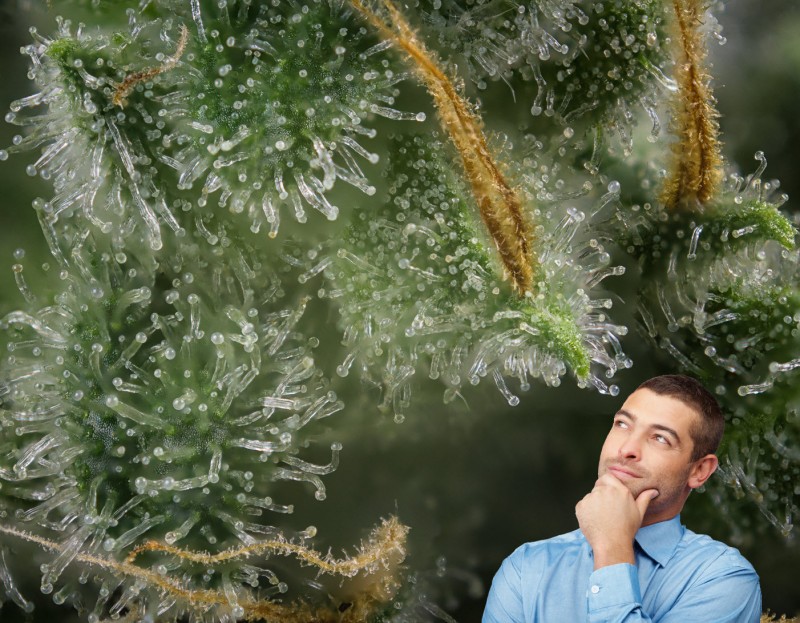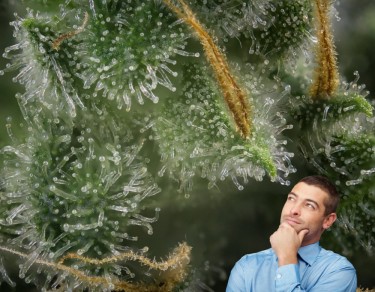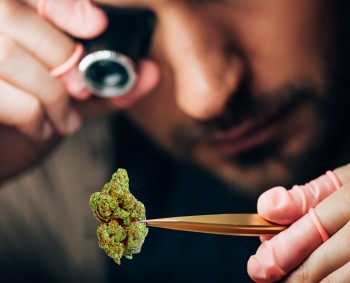If you grow cannabis, or want to make it your mission this year to learn about growing it yourself, then you’ve come to the right place.
For anyone who wants to grow cannabis whether for recreational or medicinal properties, there are many important things you have to learn about. One of these are the plant trichomes, which play a significant role in the potency of your plant.
A recent study in Plant Journal revealed that the frostier your cannabis buds, the stronger it will be. These frosty hairs are the trichomes of the plant, which are responsible for giving the plant its medicinal and psychoactive effects. The study, conducted by researchers from the University of British Columbia, discovered that the more mushroom-shaped fibers are on the cannabis flower is an indication of healthy cannabinoid levels. Though in nature, these trichomes were actually evolved to serve a purpose of protecting the cannabis plant from being devoured by animals and affected by the sun’s UV rays, we now know that trichomes also play other roles such as adding to its strong aroma.
For this reason, cannabis cultivators are more interested than growing abundant trichomes than anything. However, the methods of doing so can be tricky. “Despite its high economic value, our understanding of the biology of the cannabis plant is still in its infancy due to restricted legal access,” explains Teagen Quillichini, one of the study’s authors, who is also a postdoctoral fellow at the University of British Columbia. “Trichomes are the biochemical factories of the cannabis plant and this study is the foundation for understanding how they can make and store their valuable products,” he tells Science Daily.
There are currently three kinds of trichomes that we know about: bulbous, sessile, and stalked. The researchers utilized microscopic processes and chemical filing techniques to learn about these trichomes as well as their internal structures. They found that all these three kinds emit various colors when exposed to UV light. “We saw that stalked glandular trichomes have expanded ‘cellular factories’ to make more cannabinoids and fragrant terpenes,” says study lead author Sam Livingston. “We also found that they grow from sessile-like precursors and undergo a dramatic shift during development that can be visualized using new microscopy tools.”
The study suggests that cultivators can make use of ultraviolet testing when growing cannabis in order to monitor their trichomes and ensure they grow optimally. The researchers also add that learning more about the trichome DNA can be a game-changer in cannabis cultivation. “We found a treasure trove of genes that support the production of cannabinoids and terpenes,” says Anne Lacey Samuels, principal investigator and a botany professor at UBC. “With further investigation, this could be used to produce desirable traits like more productive marijuana strains or strains with specific cannabinoid and terpene profiles using molecular genetics and conventional breeding techniques.”
These interesting findings call for more research in order to be applied, but as a home grower, here’s what you can do.
Making The Most Of Your Trichome Growth
Now you know that trichomes are responsible for producing THC, CBD, and other beneficial cannabinoids as well as its flavor, aroma, and high.
So how can you maximize its growth?
You can use a microscope or a camera to tell how ripe your flowering female cannabis plants are. Look out for these resin heads, which should be clear during the early to middle flowering phases. On the final phase of the cycle, the clear mushroom-shaped heads will transform to a milky white color, and finally to amber.
When the trichomes are still clear, the potency of cannabis is still extremely low, though when its cloudy, cannabis has been known to give an energetic buzz. Once it becomes amber, that’s when it’s more potent and can deliver a body and couchlock high. You can also get mixed trichomes, combining a mental and physical high. For this reason, seasoned cannabis growers often harvest a combination of amber and milky trichomes as they see it as the right time to harvest.
Keep in mind that there are also other factors that contribute to how mature your flowers are, but keeping a close watch on the trichomes are a good guide to learning when the right time to harvest is.
Another key factor to remember is that ultraviolet rays are crucial to potent weed; since cannabis plants consume light, it’s critical that they are being fed the optimum spectrum. Trichomes respond well to ultraviolet rays, and this is why many growers invest in lighting so that their plants can produce the desired effects. Modern LED lighting solutions out there are made specifically for growing cannabis, and they are already designed to emit the right lighting that your plants need.
Other factors include humidity and temperature as well as stress training. Ideally, you should have a grow room that is setup to allow you to control humidity and temperature. You should be monitoring it closely especially 2 up to 3 weeks prior to harvest. The grow area should have a humidity level of under 30% RH, while temps should be below 26C. You can also maximize trichome growth by reducing nighttime temperatures from 10-15C. Doing this will force the cannabis flowers to boost their metabolic response, therefore increasing the resin production. An air-conditioner and dehumidifier can be used to maintain the right conditions.
When it comes to stress training, this should be done during the vegetative phase so that your plants have enough time to recover. Look up the splitting process, which is meant to significantly boost trichome production.
That’s a starter guide for learning about making the most out of your cannabis trichomes, even right at home. However, every single step of the growing process requires careful thought and assessment, but before anything, always make sure that you have healthy plants and that they are grown in a favorable environment all throughout its life cycle.
TRICHOMES AND WHAT THEY DO, READ THESE...
WHAT ARE TRICHOMES AND WHY ARE THE IMPORTANT?









